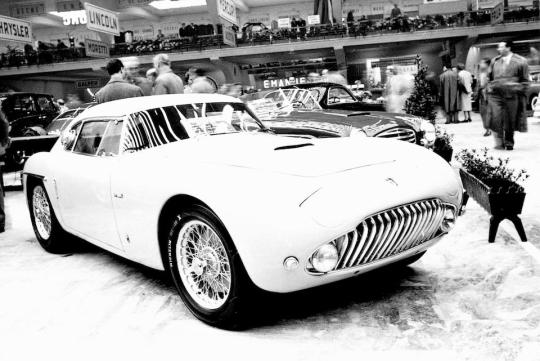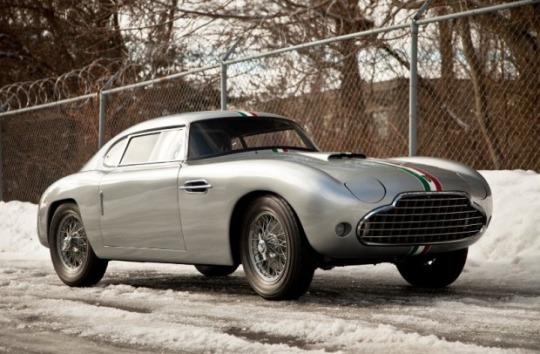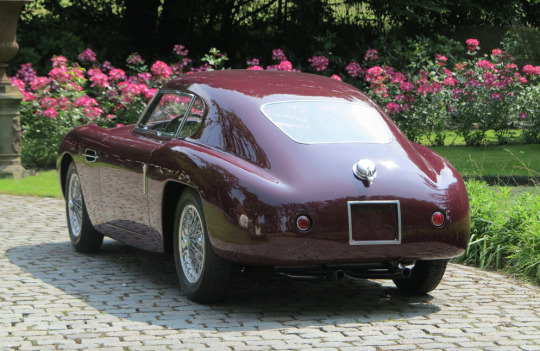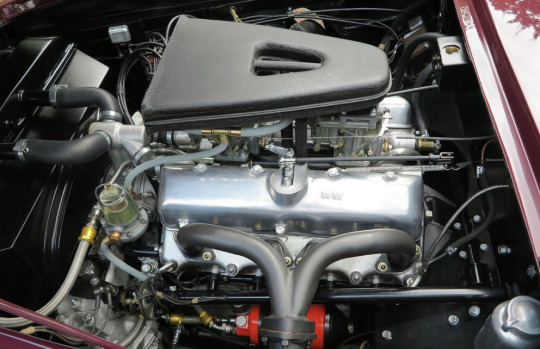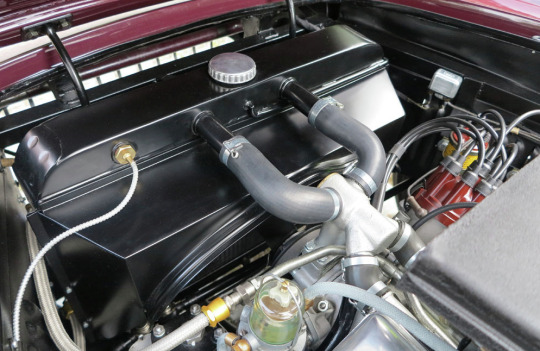#Siata 208 CS
Photo

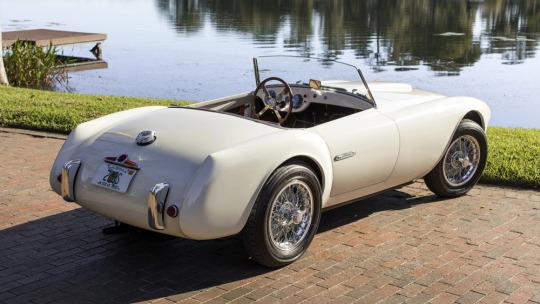


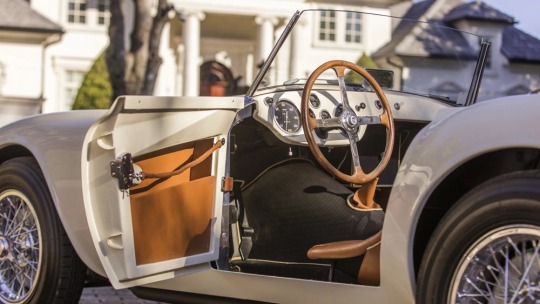
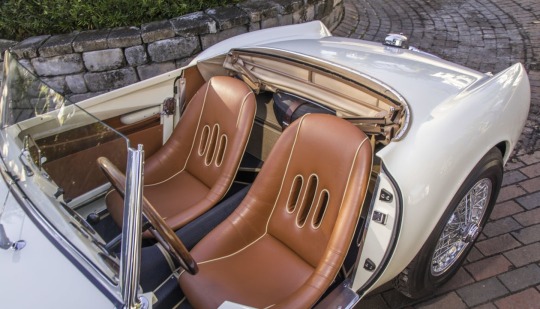
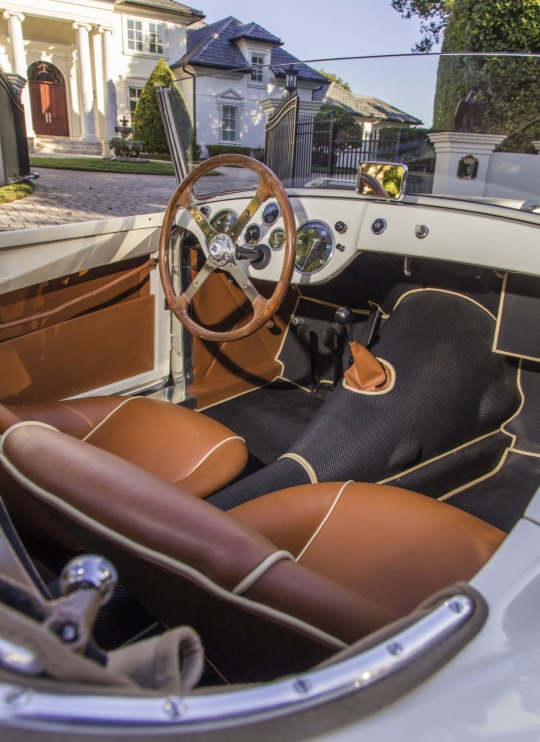
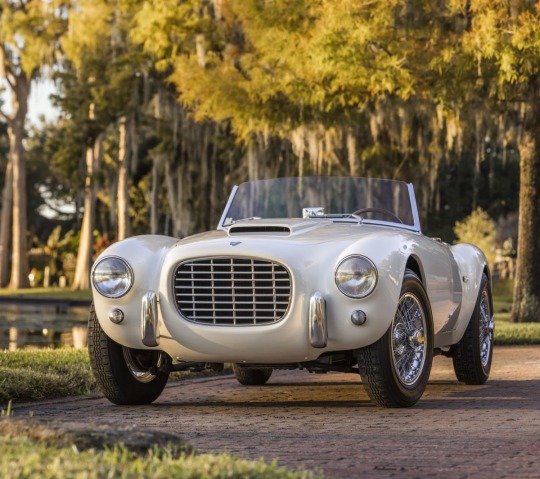


1953 Siata 208S Spider
Siata is an acronym for Società Italiana Auto Trasformazione Accessori, the Turin-based firm founded in 1926 by Giorgio Ambrosini, and which ceased production in 1970.
Much like Abarth, Siata developed its business by manufacturing performance parts for Fiat, gaining greater exposure after World War II as motorsport came back to the fore in Europe and the Americas. As 750 cc-powered race cars grew in displacement, Siata-modified vehicles gained prominence and the attention of stateside racers like Briggs Cunningham and Ernie McAfee. The latter was a Los Angeles–based importer who drove one of the first Siata-enhanced examples in the 1953 Carrera Panamericana race.
Fiat, meanwhile, had developed a 2.0-liter V-8 engine for its luxury sports car, the Otto Vu. While only 49 examples of that model were constructed, there remained additional Fiat V-8 engines that were acquired by Siata to power its new 208S Spider, unveiled in 1952. Only 33 examples were bodied by Carrozzeria Rocca Motta, of Turin, from 1953 to 1955. The car was not only powerful for its day, but supremely beautiful.
Designed by Giovanni Michelotti, these perfectly proportioned roadsters defined the iconic look of the era’s rugged sports cars. Equally stunning was the 208 CS, a coupe version of which only 18 were made, 11 bodied by Balbo and seven by Stabilimenti Farina. Topped with twin Weber carburetors and tuned by Siata, Fiat’s 2.0-liter OHV alloy V-8 engine develops more than 125 hp at 6,000 rpm, which is good enough to give the car a top speed of nearly 125 mph.
#art#design#sportcars#sportcar#luxurycars#luxurycar#vintagecars#vintagecar#siata#fiat#italy#giorgio ambrosini#spider#1953#giovanni michelotti#roadster#208 CS#siata 208 CS
1K notes
·
View notes
Photo

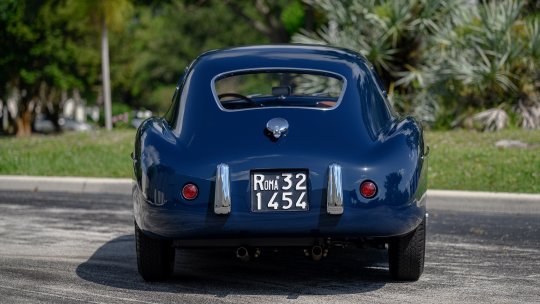

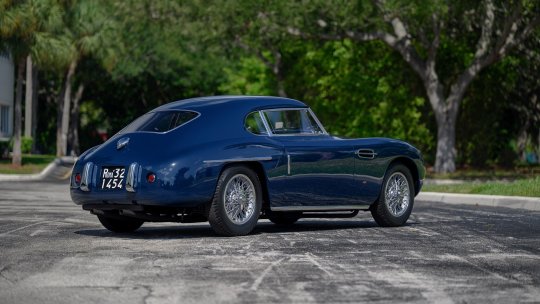


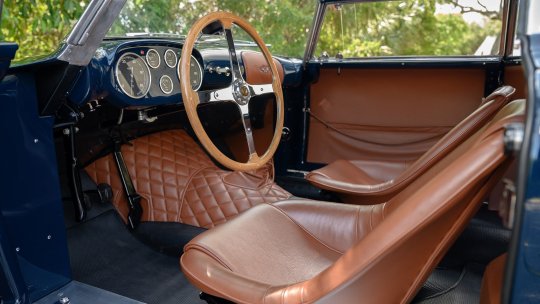
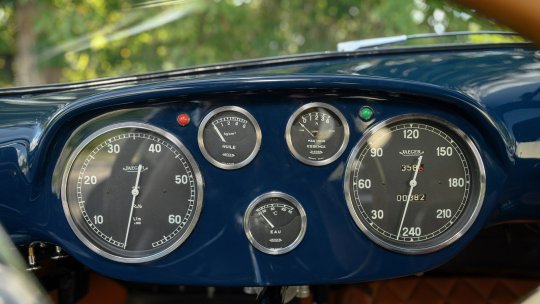
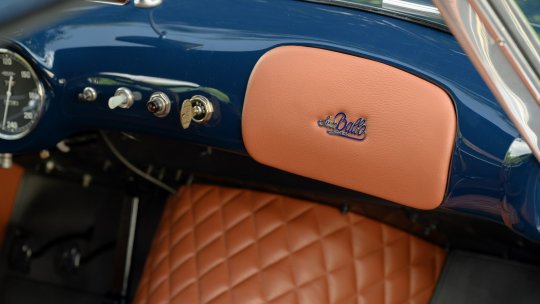
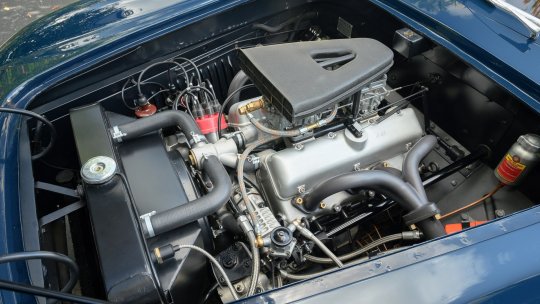
Siata 208 CS ( 1 of 6).
Societá Italiana Auto Trasformazioni Accessori (SIATA) created a marvelous assortment of machinery in its 45-year history under the guidance of the Ambrosini family. Founded by Giorgio Ambrosini in 1926, Siata specialized in performance modifications for Fiats, creating the overhead-valve conversions, multi-speed gearboxes, superchargers, and multi-carb intakes that competitive Italians wanted for their diminutive cars. The Italian auto giant conspicuously ignored—with few exceptions—the high-performance market as the Agnellis concentrated their empire around sensible, reliable, and mass-produced cars of small proportions.Siata received substantial financial assistance from Fiat following the Second World War, and by 1949 they were producing small automobiles which wore custom, house-labeled coachwork. Firmly grafted to Fiat and its engineering, Siata took a giant leap forward with the arrival of Rudolf Hruska in 1950. Hruska had worked in Porsche’s design office before the war and later collaborated with Carlo Abarth on Piero Dusio’s Cisitalia Grand Prix project. Fiat itself plotted its re-entry to the top ranks of Italian performance automobiles in 1950 with the introduction of their two-liter V-8 (dubbed "Otto Vu"), whose development was entrusted to Siata and executed in total secrecy by Hruska’s team.
The unusual oversquare, 70-degree V-8 engine featured all-aluminum castings with wedge-shaped combustion chambers. Induction was through a pair of dual-throat, downdraft Weber carburetors. With its high-revving short-stroke design and 8.5:1 compression ratio, prodigious power was channeled through a four-speed manual gearbox. Hruska planted the engine into a tubular chassis, and this became the basis of Fiat’s 8V.
Debuting at the 1952 Geneva Salon, the 8V caused an absolute sensation perhaps best equated to a meltdown of Italy’s motoring press. For many, the Siata-developed, Fiat-badged supercar defied belief. In particular, the advanced chassis featured a fully independent suspension with coil springs and telescopic shock absorbers at all four corners and was a marvelously sophisticated platform for its time, with supple and predictable handling that amazed drivers accustomed to the rigidly sprung, “flex-framed,” live-axle sports cars of the time.
Approximately 200 Tipo 104 engines were made to supply the 114 8V examples which Fiat ultimately produced. Eighty-five or so surplus engines were thusly returned to Siata, which seized the opportunity to supply them with additional house-made upgrades and implant them into the very chassis from which the earth-shattering Otto Vu had been developed.
The resulting Siata 208 CS was available as an attractive barchetta-like Spider or streamlined berlinetta, which Siata commissioned from a small pool of local coachbuilders including Bertone, Vignale, and Stabilimenti Farina. It is said that Siata openly encouraged the carryover of major styling details which these same companies were providing to Ferrari during the same period.
Perhaps the shapeliest design ever rendered upon the 208 CS, however, was executed by Balbo of Turin. Just nine berlinettas were made, of which only six examples are known to remain extant.
248 notes
·
View notes
Photo

1953 Siata 208S Spider Siata is an acronym for Società Italiana Auto Trasformazione Accessori, the Turin-based firm founded in 1926 by Giorgio Ambrosini, and which ceased production in 1970. Much like Abarth, Siata developed its business by manufacturing performance parts for Fiat, gaining greater exposure after World War II as motorsport came back to the fore in Europe and the Americas. As 750 cc-powered race cars grew in displacement, Siata-modified vehicles gained prominence and the attention of stateside racers like Briggs Cunningham and Ernie McAfee. The latter was a Los Angeles–based importer who drove one of the first Siata-enhanced examples in the 1953 Carrera Panamericana race. Fiat, meanwhile, had developed a 2.0-liter V-8 engine for its luxury sports car, the Otto Vu. While only 49 examples of that model were constructed, there remained additional Fiat V-8 engines that were acquired by Siata to power its new 208S Spider, unveiled in 1952. Only 33 examples were bodied by Carrozzeria Rocca Motta, of Turin, from 1953 to 1955. The car was not only powerful for its day, but supremely beautiful.Designed by Giovanni Michelotti, these perfectly proportioned roadsters defined the iconic look of the era’s rugged sports cars. Equally stunning was the 208 CS, a coupe version of which only 18 were made, 11 bodied by Balbo and seven by Stabilimenti Farina. Topped with twin Weber carburetors and tuned by Siata, Fiat’s 2.0-liter OHV alloy V-8 engine develops more than 125 hp at 6,000 rpm, which is good enough to give the car a top speed of nearly 125 mph.
#art#design#sportcars#sportcar#luxurycars#luxurycar#vintagecars#vintagecar#siata#fiat#italy#giorgio ambrosini#spider#1953#giovanni michelotti#roadster#208 CS#siata 208 CS
5 notes
·
View notes
Text
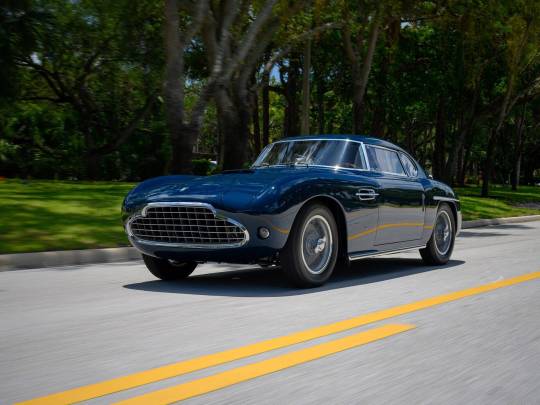
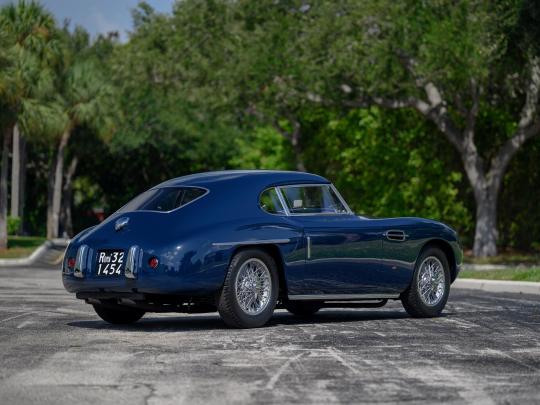

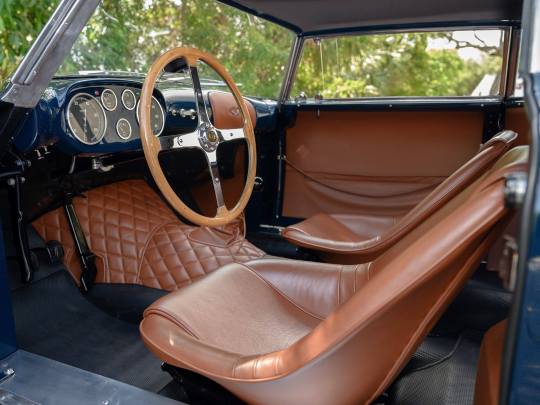



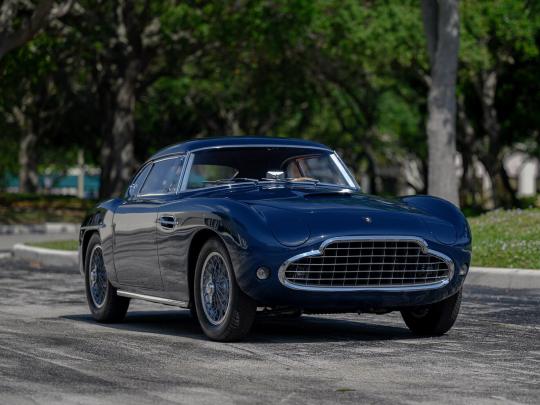
1953 Siata 208 CS by Balbo
#Siata#1953 Siata 208 CS by Balbo#automobile#car#sports car#italian sports car#luxury#luxury car#luxury living#luxury lifestyle#rich#expensive#collectable#sexy
13 notes
·
View notes
Text



1951 Siata Daina 208 CS
My tumblr-blogs: https://www.tumblr.com/blog/germancarssince1946 & https://www.tumblr.com/blog/frenchcarssince1946 & https://www.tumblr.com/blog/englishcarssince1946 & https://www.tumblr.com/blog/italiancarssince1946
4 notes
·
View notes
Text
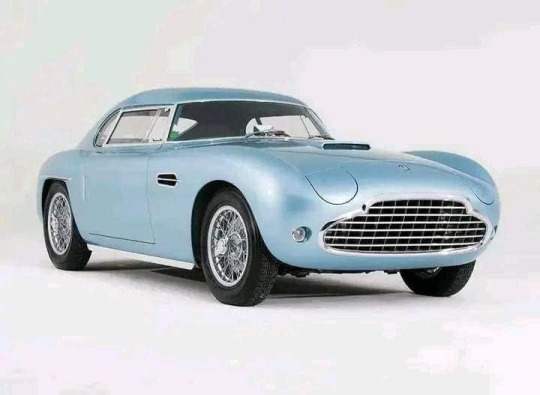






Siata 208 CS Balbo 1952. - source Top Cars +.
74 notes
·
View notes
Photo

Siata 208 CS Berlinetta
1 note
·
View note
Photo
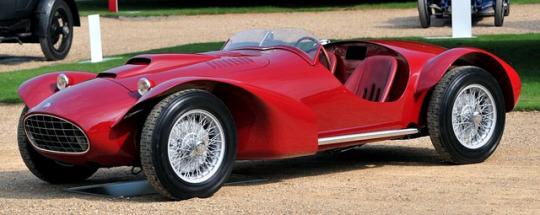

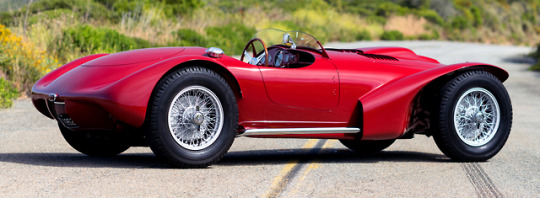
Siata 208 CS Corsa Spider, 1952, by Bertone. A racing version of the Fiat 8V-based Siata 208 that was owned and raced by Nuccio Bertone
#Siata#Siata 208 CS#Siata 208 CS Corsa Spider#1952#1950s#race car#Bertone#Nuccio Bertone#open roof#spider#dead brands
155 notes
·
View notes
Photo




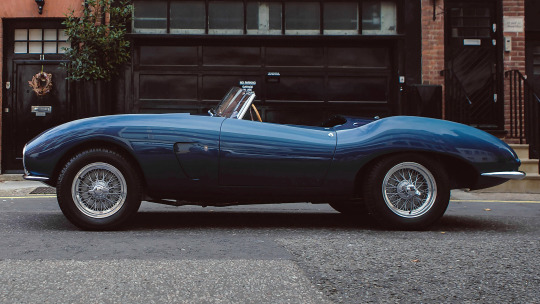


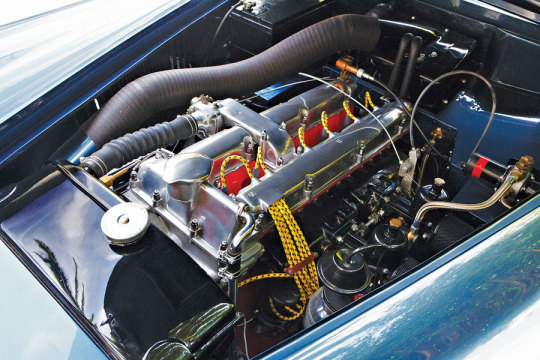
Aston Martin DB2/4 Bertone Spider (1 of 3).
In 1953, Stanley Arnolt purchased five sequential Aston Martin DB2/4 chassis and sent them to Carrozzeria Bertone to be fitted with custom coachwork. While the even-numbered chassis were fitted with opulent, luxurious bodies, 503, 505, and 507 were fitted with a distinctive sporting design penned by one of the most talented and prolific designers of the 1950s and 1960s, Franco Scaglione.Scaglione’s credits include the incomparable Alfa Romeo B.A.T. cars, the Siata 208 CS coupe, the Abarth Porsche, the Alfa Romeo Tipo 33 Stradale, and a wide variety of one-offs and important production cars.Of the three chassis fitted with this body, two were designed for outright competition use and were minimally equipped for the purpose; the third, this car, LML505, was a more luxurious example equipped with a full windscreen, intricate grille, bumpers, a lavishly appointed interior with unique features, and full soft top.Arnolt showed the suitably opulent LML505 at the 1954 New York Auto Show, where it was fitted with an Aston Martin badge in an attempt to seduce company owner David Brown into making the Bertone-bodied roadster an Aston Martin production model. The gesture obviously left its mark, with Aston Martin taking almost five years to catch on. Arnolt lived just long enough to see the Italian firms Touring and Zagato being used to turn out some of the most competitive Aston race cars of the early 1960s.
#Aston Martin DB2/4 Bertone Spider#Carrozzeria Bertone#Franco Scaglione#Alfa Romeo B.A.T#Siata 208 CS#Abarth Porsche#Alfa Romeo Tipo 33 Stradale
144 notes
·
View notes
Photo

1953 Siata 208S Spider Siata is an acronym for Società Italiana Auto Trasformazione Accessori, the Turin-based firm founded in 1926 by Giorgio Ambrosini, and which ceased production in 1970. Much like Abarth, Siata developed its business by manufacturing performance parts for Fiat, gaining greater exposure after World War II as motorsport came back to the fore in Europe and the Americas. As 750 cc-powered race cars grew in displacement, Siata-modified vehicles gained prominence and the attention of stateside racers like Briggs Cunningham and Ernie McAfee. The latter was a Los Angeles–based importer who drove one of the first Siata-enhanced examples in the 1953 Carrera Panamericana race. Fiat, meanwhile, had developed a 2.0-liter V-8 engine for its luxury sports car, the Otto Vu. While only 49 examples of that model were constructed, there remained additional Fiat V-8 engines that were acquired by Siata to power its new 208S Spider, unveiled in 1952. Only 33 examples were bodied by Carrozzeria Rocca Motta, of Turin, from 1953 to 1955. The car was not only powerful for its day, but supremely beautiful.Designed by Giovanni Michelotti, these perfectly proportioned roadsters defined the iconic look of the era’s rugged sports cars. Equally stunning was the 208 CS, a coupe version of which only 18 were made, 11 bodied by Balbo and seven by Stabilimenti Farina. Topped with twin Weber carburetors and tuned by Siata, Fiat’s 2.0-liter OHV alloy V-8 engine develops more than 125 hp at 6,000 rpm, which is good enough to give the car a top speed of nearly 125 mph.
#art#design#sportcars#sportcar#luxurycars#luxurycar#vintagecars#vintagecar#siata#fiat#italy#giorgio ambrosini#spider#1953#giovanni michelotti#roadster#208 CS#siata 208 CS
0 notes
Photo




1954 Siata 208 CS V8
Introduced in 1952 at that year's Turin Auto Show, the 208 series was the successor to Siata's first foray into fully bespoke automobiles, the Siata Daina. 18 cars are said to have been built, of which, 11 were bodied by Balbo, while the other 7 featured bodies by Stabilimenti Farina. A handful of the 11 cars bodied by Balbo were badged as "200 CS" while the rest were "208 CS". At least one of the Farina bodied cars built was a convertible/spyder model.
185 notes
·
View notes
Text



1954 Siata 8V 208 CS
My tumblr-blogs: https://www.tumblr.com/blog/germancarssince1946 & https://www.tumblr.com/blog/frenchcarssince1946 & https://www.tumblr.com/blog/englishcarssince1946 & https://www.tumblr.com/blog/italiancarssince1946
78 notes
·
View notes
Text
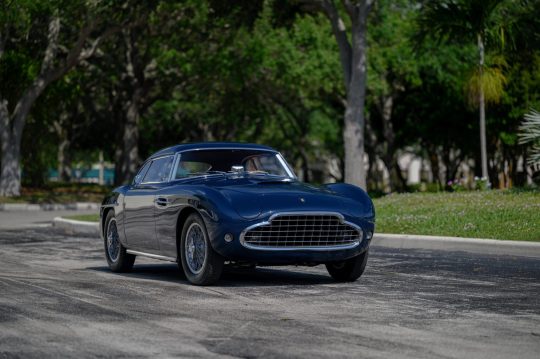
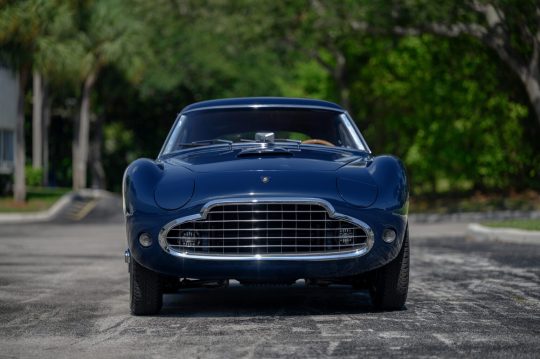

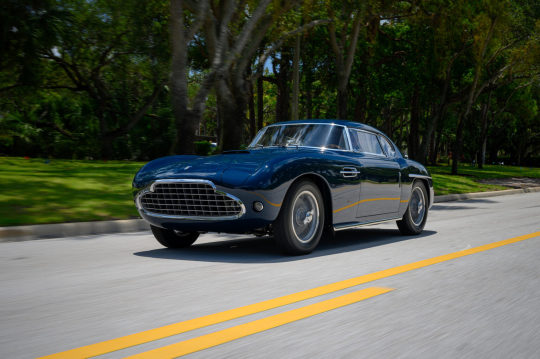

Siata 208 CS by Balbo 1953. - source Amazing Classic Cars.
51 notes
·
View notes
